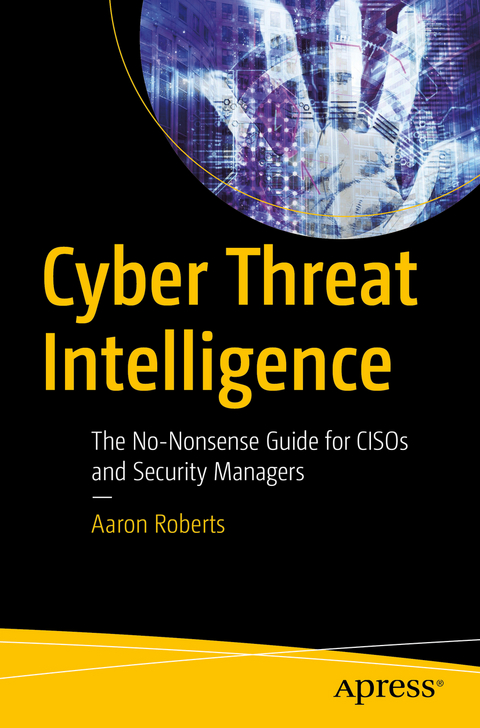
Cyber Threat Intelligence
Apress (Verlag)
978-1-4842-7219-0 (ISBN)
There are a lot of competing approaches and ways of working, but this book cuts through the confusion. Author Aaron Roberts introduces the best practices and methods for using CTI successfully. This book will help not only senior security professionals, but also those looking to break into the industry. You will learn the theories and mindset needed to be successful in CTI.
This book covers the cybersecurity wild west, the merits and limitations ofstructured intelligence data, and how using structured intelligence data can, and should, be the standard practice for any intelligence team. You will understand your organizations’ risks, based on the industry and the adversaries you are most likely to face, the importance of open-source intelligence (OSINT) to any CTI practice, and discover the gaps that exist with your existing commercial solutions and where to plug those gaps, and much more.
What You Will Learn
Know the wide range of cybersecurity products and the risks and pitfalls aligned with blindly working with a vendor
Understand critical intelligence concepts such as the intelligence cycle, setting intelligence requirements, the diamond model, and how to apply intelligence to existing security information
Understand structured intelligence (STIX) and why it’s important, and aligning STIX to ATT&CK and how structured intelligence helps improve final intelligence reporting
Know how to approach CTI, depending on your budget
Prioritize areas when it comes to funding and the best approaches to incident response, requests for information, or ad hoc reporting
Critically evaluate services received from your existing vendors, including what they do well, what they don’t do well (or at all), how you can improve on this, the things you should consider moving in-house rather than outsourcing, and the benefits of finding and maintaining relationships with excellent vendors
Who This Book Is For
Senior security leaders in charge of cybersecurity teams who are considering starting a threat intelligence team, those considering a career change into cyber threat intelligence (CTI) who want a better understanding of the main philosophies and ways of working in the industry, and security professionals with no prior intelligence experience but have technical proficiency in other areas (e.g., programming, security architecture, or engineering)
Aaron Roberts is an intelligence professional specializing in Cyber Threat Intelligence (CTI) and Open-Source Intelligence (OSINT). He is focused on building intelligence-led cyber capabilities in large enterprises and conducting online investigations and research. He has worked within several the public and private sectors as well as the British Military. As such he understands how intelligence can and should be utilized within a range of environments and the fundamental approach that businesses must take to get the maximum value out of their cyber threat intelligence program.
Chapter 1: The Cybersecurity Wild West.- Chapter 2: The Cybersecurity Wild West.- Chapter 3: Cyber Threat Intelligence–What Does It Mean?.- Chapter 4: Determining What Your Business Needs.- Chapter 5: How Can I Implement This? (No Matter Your Budget).- Chapter 6: Things to Consider When Implementing CTI.- Chapter 7: The Importance of OSINT.- Chapter 8: I Already Pay for Vendor X. Should I Botherwith CTI?.- Chapter 9: Summary.- Chapter 10: Useful Resources.
| Erscheinungsdatum | 16.08.2021 |
|---|---|
| Zusatzinfo | 4 Illustrations, black and white; XXII, 207 p. 4 illus. |
| Verlagsort | Berkley |
| Sprache | englisch |
| Maße | 155 x 235 mm |
| Themenwelt | Informatik ► Netzwerke ► Sicherheit / Firewall |
| Schlagworte | CTI • Cyber Investigation • cybersecurity • Cyber threat intelligence • indicators of compromise • IOCs • Mitre ATT&CK • open-source intelligence • OSINT • Stix • TAXII • Threat Intelligence Platforms |
| ISBN-10 | 1-4842-7219-6 / 1484272196 |
| ISBN-13 | 978-1-4842-7219-0 / 9781484272190 |
| Zustand | Neuware |
| Haben Sie eine Frage zum Produkt? |
aus dem Bereich


